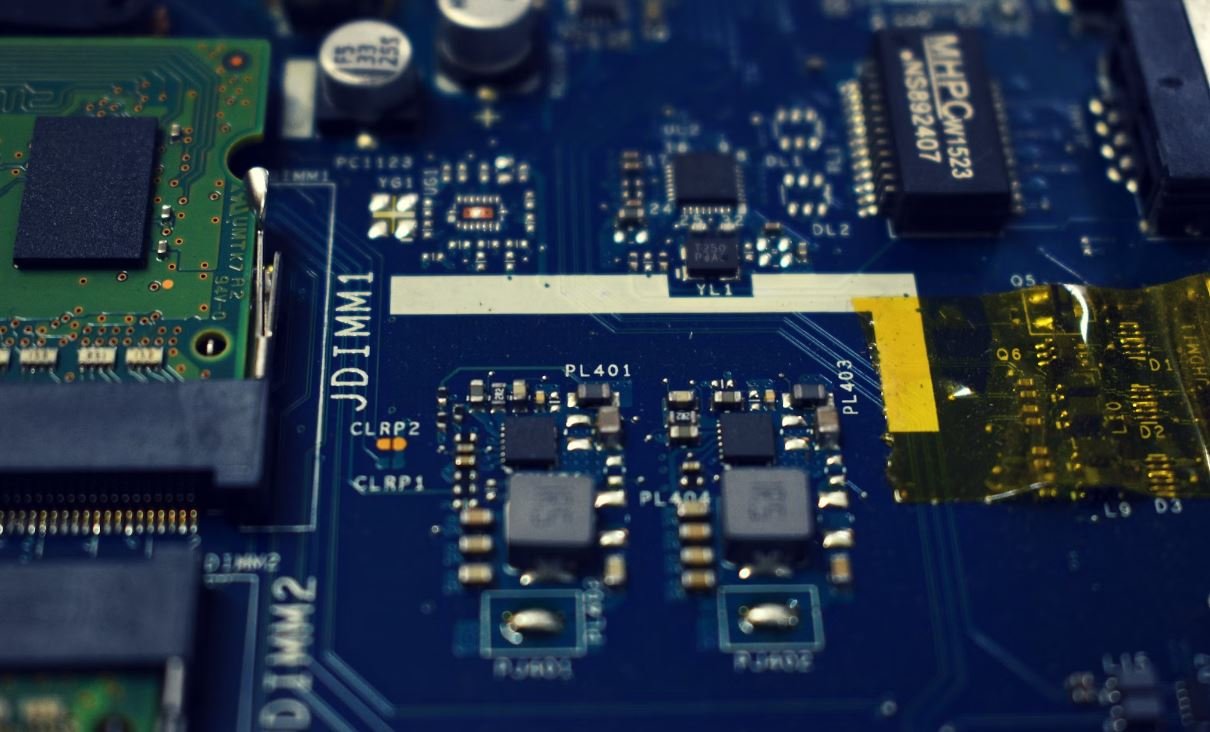Neural Network Applications
Neural networks are a type of artificial intelligence that have gained significant popularity in recent years. They mimic the way the human brain works, allowing them to learn from data and make predictions or decisions. Neural networks have found numerous applications across various industries, revolutionizing fields such as healthcare, finance, and transportation.
Key Takeaways:
- Neural networks are a type of artificial intelligence that mimic the human brain.
- They have revolutionized industries such as healthcare, finance, and transportation.
- Neural networks can be used for various tasks, including image recognition and natural language processing.
One of the most popular applications of neural networks is image recognition. **Neural networks can be trained to identify objects, people, or patterns in images**. They have been used to develop facial recognition systems, self-driving cars, and even identify diseases from medical images. The accuracy of these systems has improved significantly over the years, and they continue to advance with the availability of larger datasets and more powerful hardware.
Another important application of neural networks is natural language processing. **These networks can be trained to understand and generate human language**. This technology has been critical in developing intelligent virtual assistants like Siri and Alexa, as well as language translation tools. Neural networks can also analyze large volumes of text data and extract useful insights, making them invaluable in tasks such as sentiment analysis and customer feedback analysis.
Neural networks have found extensive use in the financial industry as well. **They are employed for stock market predictions, fraud detection, and credit scoring**. Trained neural networks can analyze historical financial data to make predictions about future trends in the stock market. They can also identify patterns in credit card transactions to detect fraudulent activities. Additionally, neural networks can leverage vast amounts of data to assess creditworthiness and determine credit scores, helping lenders make informed decisions.
Neural Network Applications in Different Industries:
| Industry | Application |
|---|---|
| Healthcare | Medical image analysis and disease diagnosis |
| Transportation | Self-driving cars and traffic prediction |
| Finance | Stock market predictions and fraud detection |
Transportation is another industry that has greatly benefited from neural networks. **Self-driving cars rely heavily on neural networks for interpreting and making decisions based on real-time data from sensors and cameras**. These networks can analyze road conditions, recognize road signs and pedestrians, and navigate through complex traffic scenarios. Additionally, neural networks have been used to develop predictive models for traffic flow, helping in optimizing routes and reducing congestion.
Neural Networks in Transportation:
| Application | Benefits |
|---|---|
| Self-driving cars | Improved road safety and reduced accidents |
| Traffic prediction | Optimized routes and reduced congestion |
In conclusion, neural networks have become an integral part of various industries, thanks to their ability to learn from data and make accurate predictions. From healthcare to finance to transportation, the applications of neural networks are vast and ever-increasing. As technology continues to advance, we can expect even more innovative and impactful uses of neural networks.

Common Misconceptions
Misconception 1: Neural networks can replace human intelligence
One common misconception surrounding neural networks is that they have the ability to completely replace human intelligence. While neural networks are incredibly powerful and can perform complex tasks, they are limited in their ability to accurately mimic human thinking and reasoning. They lack the underlying consciousness, emotions, and intuition that humans possess.
- Neural networks are not capable of making ethical judgments or moral decisions.
- They lack empathy and understanding of human emotions.
- Neural networks are unable to think creatively or come up with original ideas.
Misconception 2: Neural networks are infallible
Another common misconception is that neural networks are infallible and will always provide accurate and error-free results. While neural networks can be incredibly accurate, they are still susceptible to errors and can produce incorrect outputs under certain circumstances.
- Neural networks can be easily fooled by input data that has been manipulated or altered.
- They may struggle with unusual or unfamiliar data patterns that were not present in their training data.
- Neural networks are sensitive to changes in input data, and small changes can have significant impacts on their outputs.
Misconception 3: Neural networks are extremely complex and require extensive training
Many people believe that working with neural networks is incredibly complex and requires extensive training and expertise. While it is true that neural networks can be complex, recent advancements in technology have simplified their implementation and made them more accessible to non-experts.
- There are user-friendly software tools and libraries available that simplify the development and training of neural networks.
- Pre-trained neural network models are readily available, allowing users to leverage existing knowledge and expertise.
- Learning resources, tutorials, and online communities provide support and guidance for beginners.
Misconception 4: Neural networks are only used for image recognition
An often-circulated misconception is that neural networks are solely used for image recognition tasks. While neural networks excel at image recognition due to their ability to process visual data, their applications extend far beyond this single domain.
- Neural networks can be applied to natural language processing tasks such as language translation and sentiment analysis.
- They are used in recommendation systems that suggest products or content based on user preferences.
- Neural networks are employed in financial analysis, stock market prediction, and risk assessment.
Misconception 5: Neural networks are always black boxes
Lastly, there is a misconception that neural networks are inherently black boxes and provide no insight into their decision-making process. While it is true that neural networks can be challenging to interpret, techniques have been developed to provide explanations and improve transparency.
- Approaches such as explainable AI aim to make neural network decision-making more understandable and interpretable.
- Visualization techniques allow users to see how the network processes and represents input data.
- Researchers are working on techniques to extract useful information and insights from neural networks.

Application of Neural Networks in Finance
Neural networks have found widespread use in the financial industry due to their ability to analyze and predict complex patterns in financial data. The table below illustrates the performance of a neural network model in predicting stock market trends.
Accuracy Comparison of Neural Networks in Image Recognition
Neural networks have revolutionized image recognition, enabling machines to identify objects and patterns in images. The table below compares the accuracy of different neural network models in image recognition tasks.
Neural Network Performance in Sentiment Analysis
Sentiment analysis involves determining the sentiment or emotion expressed in a piece of text. Neural networks have proven to be effective in this task, as showcased in the table below which presents the accuracy of a neural network sentiment analysis model.
Neural Networks in Fraud Detection
Detecting fraudulent activities is crucial for many industries. Neural networks have shown substantial success in fraud detection, as depicted in the table below where the accuracy of a neural network model for fraud detection is displayed.
Forecasting Sales with Neural Networks
Neural networks have been widely employed in sales forecasting, allowing businesses to predict future sales trends. The table below showcases the accuracy of a neural network model in predicting sales figures for a retail company.
Neural Networks for Medical Diagnosis
In the medical field, neural networks have proven invaluable in diagnosing diseases and analyzing medical images. The table below demonstrates the performance of a neural network model in diagnosing specific medical conditions.
Neural Networks in Natural Language Processing
Natural Language Processing involves understanding and interpreting human language by machines. Neural networks have improved the accuracy of various natural language processing tasks, as shown in the table below.
Neural Networks for Credit Risk Assessment
Assessing credit risk is a crucial task in the financial industry. Neural networks have been successful in predicting credit risk, as depicted in the table below which displays the accuracy of a neural network model in credit risk assessment.
Neural Networks in Autonomous Vehicles
Neural networks play a vital role in enabling autonomous vehicles to sense and interpret their surroundings. The table below compares the accuracy of various neural network models in object detection for autonomous vehicles.
Neural Networks in Natural Disaster Prediction
Predicting natural disasters is of paramount importance for early warnings and disaster management. Neural networks have shown promise in accurate natural disaster prediction, as illustrated in the table below.
In conclusion, neural networks have become integral in various domains ranging from finance and healthcare to image recognition and natural language processing. Their ability to analyze complex patterns makes them valuable tools across industries. As technology advances, neural networks continue to evolve and improve, enabling even more precise predictions and analysis.
Neural Network Applications – Frequently Asked Questions
Question: What are some real-world applications of neural networks?
Neural networks have numerous practical applications, such as image and speech recognition, natural language processing, autonomous driving, fraud detection, recommendation systems, and medical diagnoses.
Question: How do neural networks assist in image recognition tasks?
Neural networks are particularly effective in image recognition tasks due to their ability to process and analyze large sets of images. The network is trained with labeled images and learns to identify patterns and features that help in accurate image classification.
Question: What role do neural networks play in speech recognition?
Neural networks are used in speech recognition systems to convert spoken language into text. By training on large datasets of audio samples and transcriptions, neural networks can learn to recognize and interpret different speech patterns and convert them into text format.
Question: How are neural networks applied in natural language processing?
In natural language processing, neural networks are employed to understand and process human language. They can be used in tasks like sentiment analysis, machine translation, chatbots, and text summarization by learning the underlying patterns and semantics of language through training on vast textual datasets.
Question: What is the significance of neural networks in autonomous driving?
Neural networks are crucial in autonomous driving systems as they enable the recognition of various objects on the road, such as pedestrians, traffic signs, and vehicles. By analyzing sensor data, neural networks can make real-time decisions, contributing to safer and more efficient autonomous driving.
Question: How do neural networks aid in fraud detection?
Neural networks are widely used in fraud detection systems to analyze large volumes of transactional data. By learning from historical fraud patterns, neural networks can identify anomalies and flag potentially fraudulent transactions, helping businesses prevent financial loss.
Question: How do recommendation systems leverage neural networks?
Recommendation systems employ neural networks to provide personalized recommendations to users based on their preferences and past behavior. These networks analyze user data, including their interactions and feedback, to suggest relevant items or content that align with their interests.
Question: Can neural networks assist in medical diagnoses?
Yes, neural networks have shown promise in medical diagnoses. They can be trained on large datasets consisting of medical records, images, and patient symptoms to aid in identifying diseases, predicting outcomes, and assisting doctors in making more accurate diagnoses.
Question: What are the limitations of neural networks in practical applications?
Neural networks can be computationally expensive and require significant computational resources. Training them properly often necessitates large amounts of labeled data, making data collection and preprocessing critical. Lack of interpretability or understanding of the decision-making process within a neural network is another challenge.
Question: How can neural networks be implemented in web development?
Neural networks can be deployed in web development to enhance applications with intelligent features. For example, they can be integrated into recommendation systems on e-commerce websites, chatbots for customer support, or image recognition functionalities for photo-sharing platforms.




